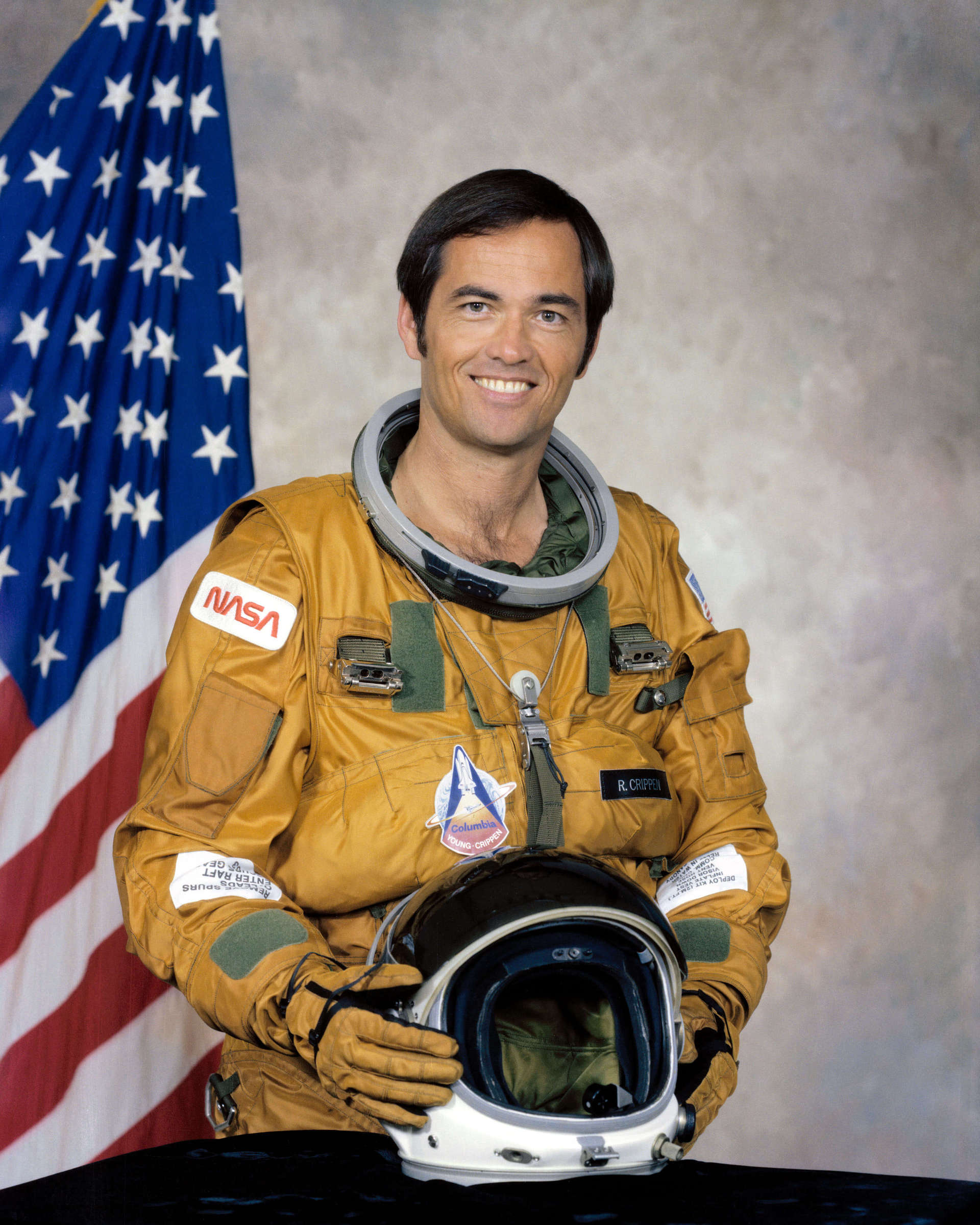Robert Crippen
American - (NASA)
Retired
Date of Birth: Sept. 11, 1937
Age: 88
Robert Laurel Crippen is an American retired naval officer and aviator, test pilot, aerospace engineer, and retired astronaut. He traveled into space four times: as Pilot of STS-1 in April 1981, the first Space Shuttle mission; and as Commander of STS-7 in June 1983, STS-41-C in April 1984, and STS-41-G in October 1984. Crippen received the Congressional Space Medal of Honor.
Space Shuttle Columbia / OV-102 | STS-1
National Aeronautics and Space Administration | United States of AmericaKennedy Space Center, FL, USA
April 12, 1981, noon
Status: Success
Mission:
STS-1 was the first orbital spaceflight of the Space Shuttle Program. The first orbiter Columbia took a 54.5 hour flight and circled the Earth 36 times. This was NASAs first craft to be manned during a testflight. Manned by John Young and Bob Crippen.
Low Earth OrbitSpace Shuttle Challenger / OV-099 | STS-7
National Aeronautics and Space Administration | United States of AmericaKennedy Space Center, FL, USA
June 18, 1983, 11:33 a.m.
Status: Success
Mission:
STS-7 was the second mission for the Space Shuttle Challenger. It deployed several satellites into orbit. It was the first mission scheduled to land at Kennedy Space Center however it had to divert to Edwards Air Force Base due to bad weather. STS-7 carried Sally Ride, America's first female astronaut.
Low Earth OrbitSpace Shuttle Challenger OV-099 | STS-41-C
National Aeronautics and Space Administration | United States of AmericaKennedy Space Center, FL, USA
April 6, 1984, 1:58 p.m.
Status: Success
Mission:
STS-41-C was the eleventh mission of the shuttle program and fifth mission for Space Shuttle Challenger. It marked the first time a shuttle performed a direct ascent. Its mission was to capsule the Solar Max Satellite and repair it whilst in orbit.
Low Earth OrbitSpace Shuttle Challenger / OV-099 | STS-41-G
National Aeronautics and Space Administration | United States of AmericaKennedy Space Center, FL, USA
Oct. 5, 1984, 11:03 a.m.
Status: Success
Mission:
STS-41-G was the thirteenth flight of the shuttle program and sixth of the Space Shuttle Challenger. It was the second landing made at the Kenendy Space Center. It was the first crew to carry two women, the first American EVA involving a woman, the first Australian Astronaut and first Canadian Astronaut.
Low Earth OrbitThe National Aeronautics and Space Administration is an independent agency of the executive branch of the United States federal government responsible for the civilian space program, as well as aeronautics and aerospace research. NASA have many launch facilities but most are inactive. The most commonly used pad will be LC-39B at Kennedy Space Center in Florida.
Falcon 9
Starlink Group 15-12
Space Launch Complex 4E - Vandenberg SFB, CA, USAA batch of 27 satellites for the Starlink mega-constellation - SpaceX's project for space-based Internet communication system.
Electron
Raise and Shine (RAISE-4)
Rocket Lab Launch Complex 1B - Rocket Lab Launch Complex 1, Mahia Peninsula, New ZealandRAISE-4 (RApid Innovative payload demonstration Satellite-4) is a Japan Aerospace Exploration Agency (JAXA) satellite for on-orbit demonstrations of …
Kuaizhou 11
DEAR-5
Launch Area 95A - Jiuquan Satellite Launch Center, People's Republic of ChinaDEAR-5 is a commercial in-orbit payload and micro-gravity experiments hosting spacecraft developed by Chinese commercial company AZSPACE for various …
Long March 12
SatNet LEO Group 16
Commercial LC-2 - Wenchang Space Launch Site, People's Republic of ChinaA batch of Low Earth Orbit communication satellites for the Chinese state owned SatNet constellation operated by the China Satellite Network Group. …
Falcon 9
Starlink Group 6-90
Space Launch Complex 40 - Cape Canaveral SFS, FL, USAA batch of 29 satellites for the Starlink mega-constellation - SpaceX's project for space-based Internet communication system.



